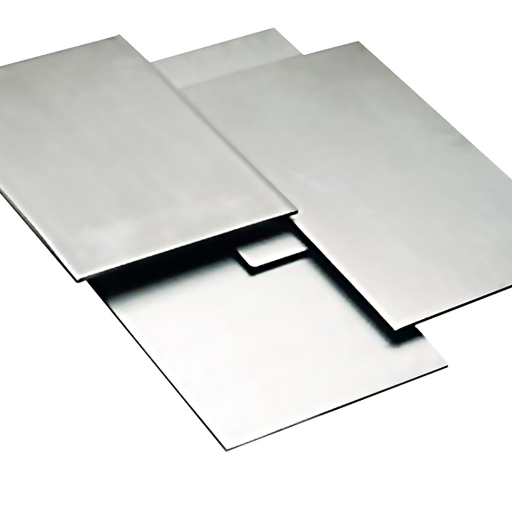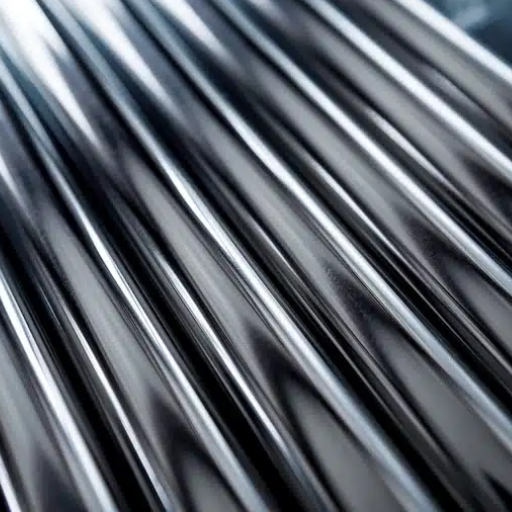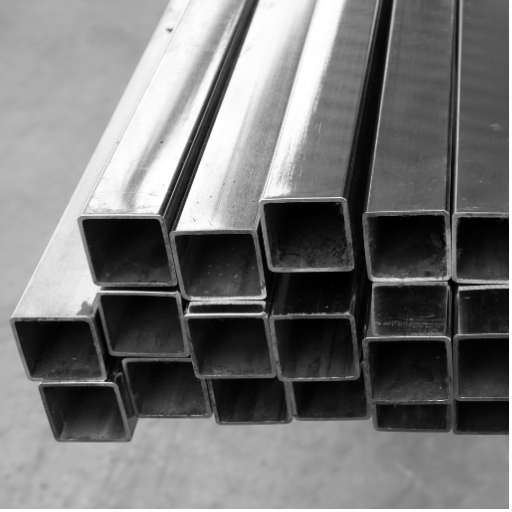Having a reputation in the aerospace, biomedical, and manufacturing industries, titanium is one of the most popular metals used today because of its excellent strength-to-weight ratio alongside superior corrosion resistance and biocompatibility. Whether or not it exhibits any form of magnetism tends to raise inquiries, especially regarding its application in areas where there is a substantial magnetic interaction. In this article, the question “Is titanium magnetic?” will be answered by checking its atomic composition, physical properties, and scientific magnet classification. Moreover, the article analyzes the effect of alloying elements on the magnetism of titanium and discusses its practical consequences for industries that work with this metal. It will do so by exploring the actual behaviors of magnets and providing a convincing rationale for their importance. Readers will come away with an understanding of the necessity behind titanium and its magnetic relatives.
What are the Magnetic Properties of Titanium?

Titanium is a paramagnetic material, meaning it has some form of weak magnetic attraction to external magnetic fields, but does not retain magnetism with the absence of the external field. This phenomenon is a result of titanium’s electronic configuration where unpaired electrons contribute to its paramagnetic properties. Pure titanium is mostly nonmagnetic at room temperature, but the presence of alloying, such as aluminum or vanadium, tends to enhance its magnetic permeability. Because of these properties, titanium is suitable for regions where there is low magnetic interference like in medical devices, aerospace parts, and some electronic systems.
Does Pure Titanium Exhibit Magnetism?
In its pure form, Titanium does not show any sign of magnetism because it is classified as paramagnetic. Meaning, that it is only feebly attracted to magnetic fields and does not store any magnetism after the external field is taken away. The paramagnetic nature of titanium is due to its electronic structure with unpaired d-electrons. Nevertheless, this weak magnetic behavior is negligible under ordinary circumstances – rendering pure titanium practically non-magnetic. Because of these, pure titanium is especially appropriate for places where the usage of magnetic interference should be lessened, like in medical implants or non-magnetic tools.
How Does Magnetic Susceptibility Affect Titanium?
Magnetic susceptibility is one of the parameters that determine the behavior of a material under an external magnetic field. Low positive magnetic susceptibility for titanium confirms its paramagnetic nature. This indicates that titanium presents only weak alignment with an external magnetic field, which stops immediately upon removal of the field. Because of this, titanium is perfect for these kinds of applications that require the absence of any magnetic interference: medical imaging such as MRI, aerospace devices with low magnetic interference, and sensitive measuring instruments. This property guarantees that titanium will remain passive in varying magnetic fields without compromising performance in critical applications.
Why is Titanium Considered Non-Magnetic?
Titanium is classified as a paramagnetic material, which denotes that it is only lightly attracted to magnetic fields and does not keep any magnetism after the external field has ceased. This phenomenon results from its electron configuration, as unpaired electrons provide a very weak magnetic moment. In contrast to ferromagnetic substances or materials that contain strong and persistent magnetism, the titanium ferromagnetic susceptibility is very low. For such reasons, it is practically considered non-magnetic, especially in conditions of severe restriction of magnetic pollution, such as in MRI systems and similar magnetically sensitive technologies. Besides, titanium’s structural composition provides stable operating performance without magnetic distortion even in high-field applications.
How Does Titanium’s Magnetic Behavior Compare to Other Metals?

Magnetic domains in iron, cobalt, and nickel account for their powerful and lasting magnetism, which diverges greatly from titanium’s magnetic behavior. As a paramagnetic metal, titanium does not hold magnetism and only shows a weak attraction towards magnetic fields as long as a magnetic field is applied externally. On the other hand, copper and silver, as diamagnetic metals, show an even lower resistance to magnetism. This puts titanium in the middle in terms of magnetism when compared to other paramagnetic and ferromagnetic metals. Because of titanium’s unique properties, it is ideal for use in magnetic-sensitive areas.
Comparison with Magnetic Metals Like Iron
Titanium has far differing magnetic properties when compared to ferromagnetic metals such as iron. Iron is a ferromagnetic material that possesses magnetic domains that align in the presence of a magnetic field leading to a strong and permanent magnetization. Titanium, however, is paramagnetic and exhibits weak and temporary magnetization in the presence of an external magnetic field which is lost when the field is removed. In addition, iron is easily magnetized and has a high magnetic permeability, which enables it to focus and channel magnetic fields. This makes it a common material in transformers and motors, as well. On the other hand, titanium has relatively low magnetic susceptibility which minimizes its impact in magnetic environments, making it an optimal material for applications with reduced magnetic interference such as biomedical implants and advanced aerospace technologies. These differences further highlight titanium’s specific usefulness in industries where neutrality in magnetism is required.
Role of Titanium Alloy in Magnetic Characteristics
Alloyed titanium metals assume the graphite, plasmonic, and diamond structure and have distinctly paramagnetic characteristics due to the alloys having a weak magnetic susceptibility. As a result, they get magnetized weakly and temporarily in the presence of an external magnetic field. This phenomenon can be primarily attributed to the electronic configuration of titanium, where the presence of several unpaired electrons does not provide for strong magnetic effects. The incorporation of alloying elements such as aluminum, vanadium, or molybdenum does not seem to affect this characteristic or at best retain the non-magnetic or weakly magnetic character of the alloy. These alloys do not possess strong magnetic powers which is one of the main benefits of titanium alloys when used for parts that have to be unresponsive to magnetism, and in this case medical implants such as MRI devices, electrical instrument transformers, and aerospace technology. In addition, the resistance of titanium alloys to electrochemical corrosion and their biocompatibility make these metals ideal for use in sensitive regions that are prone to interference from magnetic fields.
Can Magnets Stick to Titanium?

Magnets typically do not adhere to titanium. Instead, titanium is considered as a paramagnetic substance which means it has weak and temporary attraction to magnetism when placed in an external magnetic field. The weak magnetic attraction is not strong enough to hold or attract a magnetic force, and as such, titanium is practically non-magnetic. Moreover, titanium alloys do not have any magnetic properties even when combined with other materials. As such, magnets will not stick to titanium alloys.
Understanding the Magnetic Response of Titanium
The crystalline characteristics and the electronic structure of titanium define its magnetic response. As a paramagnetic material, titanium has unpaired orbitals which lead to a weak magnetic response to an external magnetic field. This weak response does not allow for the formation of permanent magnets or for the titanium to attract magnetic material. The origin of titanium’s paramagnetic behavior tends to lie in its atomic structure, where the magnetic susceptibility is positive but far lower than a single unit, which leads to titanium being practically non-magnetic in most ordinary conditions.
For titanium alloys, the incorporation of other elements does not usually appreciably change this paramagnetic feature. Most titanium alloys exhibit weak magnetic conductivities due to their low ferromagnetic domains, which makes them suitable for sensitive medical devices and components used in electronics and aviation. These features guarantee stable operation in the presence of a magnetic field and protect against the possibility of interference or unwanted magnetic actions.
Influence of External Magnetic Field on Titanium
Titanium possesses weak ferromagnetism and along with it exists paramagnetic behavior. This, when magnetically fielded, causes the electrons to align together with the field. The paramagnetic behavior would cause these ‘electron clusters’ to eventually fizzle out once the external magnetic field is taken off. Thus, the titanium does not show residual magnetism. Numerous investigations show that not only does titanium have low magnetic susceptibility, but even at the strongest field, it does nothing to change its configuration. Because of this, titanium is perfect for these types of situations where magnetism can not be present.
Titanium can withstand being exposed to external magnetic fields without owing any significant changes to its overall condition. Even when magnetically heightened, titanium presents a restraint on providing any magnetic action. This is why titanium is so widely used in the construction of delicate devices, like MRI. This phenomenon is very beneficial for medical and aerospace as well as electronic devices where there is no room for error or misrepresentation.
Is Pure Titanium Suitable for MRI Applications?

Indeed, unalloyed titanium exhibits significant potential in the biomedical field due to its non-magnetic nature coupled with very low magnetic susceptibility. This guarantees that the strong magnetic fields produced by MRI machines are not interfered with, hence making imaging processes accurate. Moreover, titanium is biocompatible, corrosion resistant, and has a very low density; these are favorable properties for metal implants and other medical devices that must work efficiently within the MR environment. Not only that, but the metal’s excellent performance when exposed to external magnetic fields without major changes makes it a wonderful candidate for this important application.
Non-Interference of Pure Titanium in MRI
Due to its property of non-magnetism, pure titanium does not interfere with the MRI environment. Unlike ferromagnetic materials, titanium has very low magnetic permeability and very low magnetic susceptibility. As a result, titanium does not interfere with the magnetic fields essential for imaging. Because of these factors, titanium can constantly remain structurally and functionally stable while exposed to very strong magnetic fields. Therefore, titanium is an excellent material for components and implants for medical use in MRI machines. Its biocompatibility and corrosion resistance also contribute to safety and durability. Moreover, titanium stands out because of its exceptional mechanical strength along with ideal MRI compatibility. This places titanium at the forefront of modern medicine.
Benefits of Non-Magnetic Properties in Medical Uses
The medical applications of pure titanium feature non-magnetic factors that prove to be extremely beneficial. As noted, such materials are safe for use in MRI scans, preserving the images obtained, and posing no risk to the device itself. Non-magnetic implants do not interact with the powerful magnetic fields of MRI scanners; hence, the risk of device displacement or image distortion is eliminated. This means that diagnostic imaging can be done without putting the patient at risk, and the images obtained are accurate. Non-magnetic materials have other medical uses because they are less likely to affect sensitive devices, like pacemakers and neurostimulators, that operate on intricate electronic engineering. In addition, these materials are light and tough and do not rust, which increases the performance and durability of implants or devices, making them functional and safe for long-term use. Non-magnetic materials are thus widely preferred for high-end medical devices because of these characteristics.
What Causes Weak Magnetic Properties in Titanium?

The low quality of the magnetic features of titanium is attributed to its electronic configuration and atomic arrangement. As a paramagnetic material, titanium lacks unpaired electrons that would be responsible for the generation of a strong magnetic field. Rather, it only experiences magnetization temporarily, a phenomenon referred to as residual magnetism, and the magnetization effect ceases upon removal of the external magnetic field. Furthermore, the crystal structure of titanium, especially the hexagonal close-packed and body-centered cubic phases, does not permit the ferromagnetic ordering essential for significant magnetic activity. Because of these reasons, titanium is fostered for its minimal interaction with magnetic fields for specialized nonmagnetic uses.
Role of Paramagnetic Material in Titanium’s Behavior
Titanium and many other paramagnetic materials demonstrate a weak increase in magnetism when subjected to an external magnetic field. This trait is due to the presence of unpaired electrons in the atoms of paramagnetic materials which tend to align themselves in the direction of the external field. The paramagnetism of titanium is temperature dependent and follows Curie’s law: higher temperature means greater alignment of atomic dipoles which causes lower susceptibility to magnetism. Apart from ferromagnetic materials, titanium can also be classed as a material that loses its magnetization when the external field is removed. This unfortunate, or fortunate, for some, property determines the usefulness of titanium in fields such as medicine implants and aerospace engineering that need precision with the use of magnetic interference.
Influence of Magnetic Field Configuration
Magnetic fields are some of the most important things when it comes to physics, engineering, and computers. They rely on their definition and the application they aim to serve. The behavior and impact of such fields are extremely critical to their sources which can be either current-carrying conductors or permanent magnets. The interaction of a magnetic field with different sources aids in defining and reconstructing its shape, direction, and magnitude. The precise control of such fields dictates the scope of its fieldwork.
Motors, transformers, and inductors are electromagnetic machines that depend heavily on the design of magnetic configuration, which can minimize losses and optimize flux density. In advanced research of electromagnetism, the controlled environments where gradient and uniform field configurations pool adaptive usage expose the magic of electromagnetism. In more progressive fields, precision tempered fields of MRI machines depend on fine-tuned magnetic field configuration, which in turn dictates the quality of imaging output.
One of the bases for constructing novel ideas within science and engineering is the impact made by a distribution’s defined and configured strength on its functionality and performance.
References
Frequently Asked Questions (FAQ)
Q: Is titanium magnetic?
A: Titanium is generally considered non-magnetic. Pure titanium is non-magnetic and is classified as a paramagnetic material, which means it has a very small magnetic moment and is weakly attracted to magnets but not enough to be considered magnetic.
Q: What is the magnetic behavior of titanium?
A: The magnetic behavior of titanium is characterized by its paramagnetic properties. This means that while it is not a ferromagnetic material, it can exhibit a weak attraction to strong magnetic fields, but this effect is minimal.
Q: Can titanium be made magnetic?
A: Titanium in its pure form cannot be made magnetic because it is inherently a non-magnetic material. However, when alloyed with certain elements, some titanium alloys can exhibit different magnetic properties, although pure titanium itself remains non-magnetic.
Q: How do the properties of titanium alloys affect their magnetism?
A: The properties of titanium alloys can vary significantly based on their composition. Some alloys may exhibit slight magnetic behavior due to the presence of elements that influence their structure, but generally, titanium alloys maintain the non-magnetic properties of pure titanium.
Q: Why is titanium classified as a paramagnetic material?
A: Titanium is classified as a paramagnetic material because it has a small magnetic susceptibility, meaning it only weakly interacts with magnetic fields. It does not become strongly magnetic or retain magnetism in the absence of an external magnetic field like ferromagnetic materials do.
Q: Does the structure of titanium affect its magnetic properties?
A: Yes, the structure of titanium, particularly its electron configuration, contributes to its magnetic properties. The arrangement of electrons in titanium leads to its classification as a paramagnetic material, meaning it exhibits only weak interaction with magnetic fields.
Q: What are the non-magnetic properties of titanium that make it useful in various applications?
A: Titanium’s non-magnetic properties, along with its high strength-to-weight ratio, corrosion resistance, and biocompatibility, make titanium widely used in industries such as aerospace, medical, and chemical processing. These properties allow titanium to be used in environments where magnetic interference must be minimized.
Q: How does the magnetic susceptibility of titanium compare to other materials?
A: The magnetic susceptibility of titanium is low compared to ferromagnetic materials, meaning it does not become strongly magnetic in the presence of a magnetic field. This weak magnetic susceptibility is typical of paramagnetic materials, distinguishing titanium from strongly magnetic substances.
Q: Why is pure titanium not ferromagnetic?
A: Pure titanium is not ferromagnetic because its atomic structure does not allow for unpaired electron spins to align in a way that creates a strong magnetic field. As a result, titanium does not exhibit the permanent magnetism observed in ferromagnetic materials.
Q: What role does the configuration of titanium play in its magnetic properties?
A: The configuration of titanium affects its magnetic properties by determining how its electrons are arranged and interact with external magnetic fields. This electron configuration leads to the weak magnetic behavior typical of paramagnetic materials, as seen in titanium.







